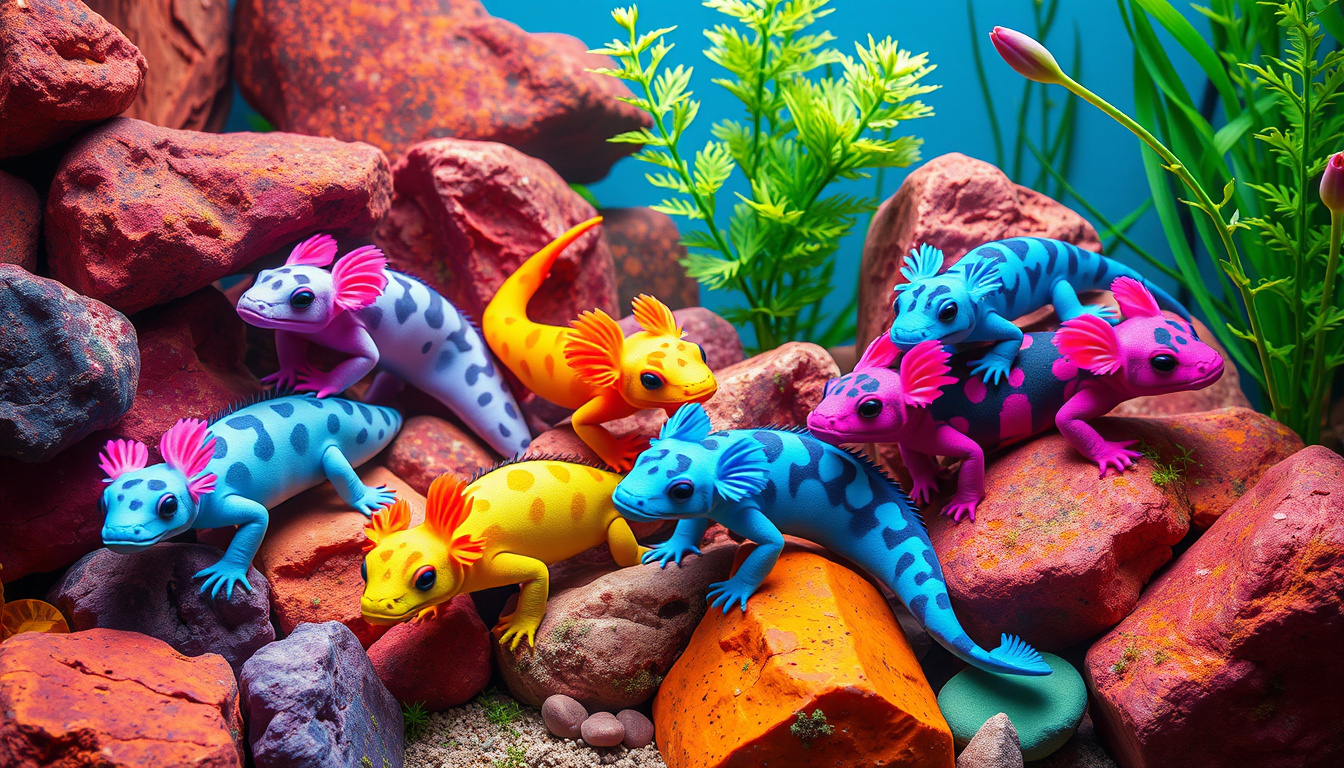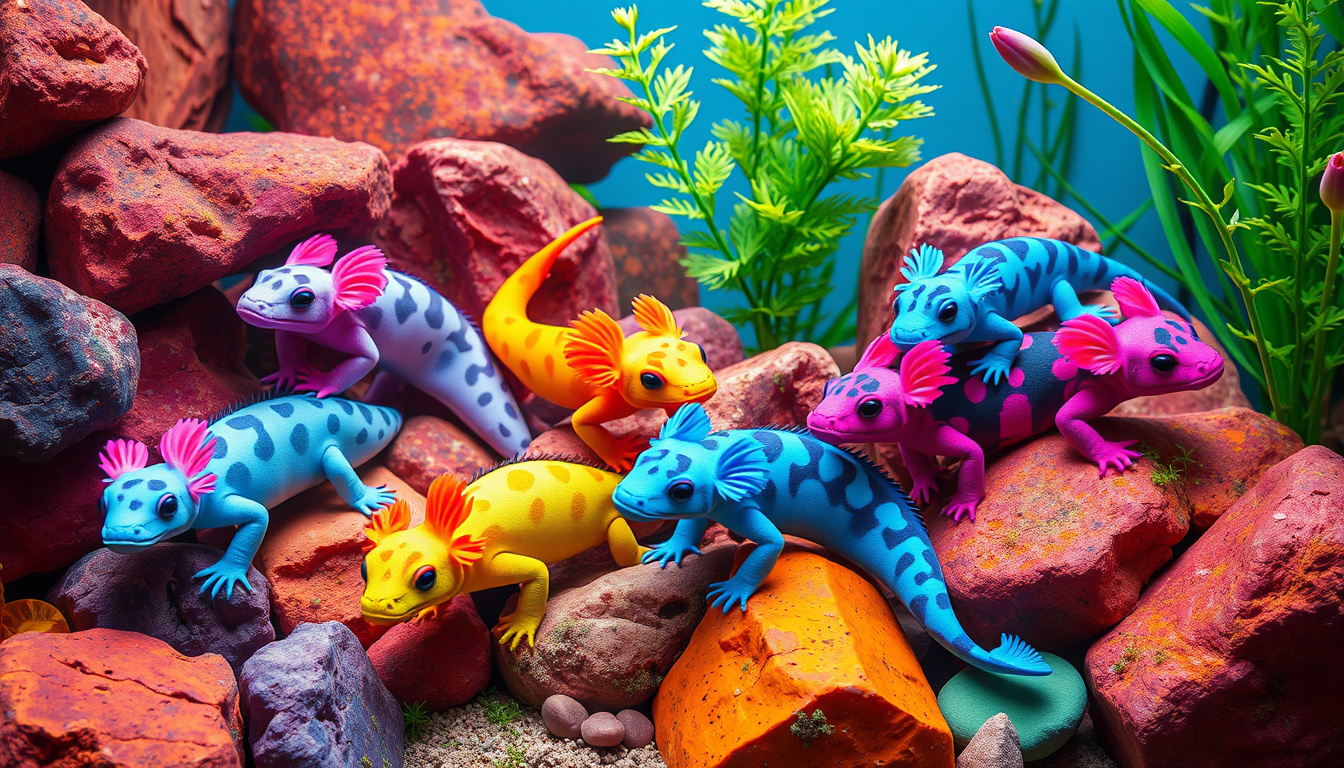If you’ve ever been captivated by the enchanting appeal of aquatic creatures, chances are you’ve stumbled upon the mesmerizing axolotl.
Known for their playful nature and remarkable regenerative abilities, these unique amphibians are more than just cute faces—they come in a stunning array of colors that can truly take your breath away.
In this complete guide, we’ll dive deep into the vibrant world of axolotl color morphs.
From exploring the common variations like the popular leucistic and golden albino to uncovering the rare and unique variations such as the piebald and melanoid, we’ll shine a light on the delightful diversity of these fascinating creatures.
Plus, we’ll take a closer look at the genetics behind these stunning colors and share essential care tips for keeping your axolotl happy in their aquarium.
So, whether you’re a budding aquarist or just curious about these charming critters, let’s embark on a colorful adventure into the realm of axolotl color morphs!

 November 2025
November 2025

